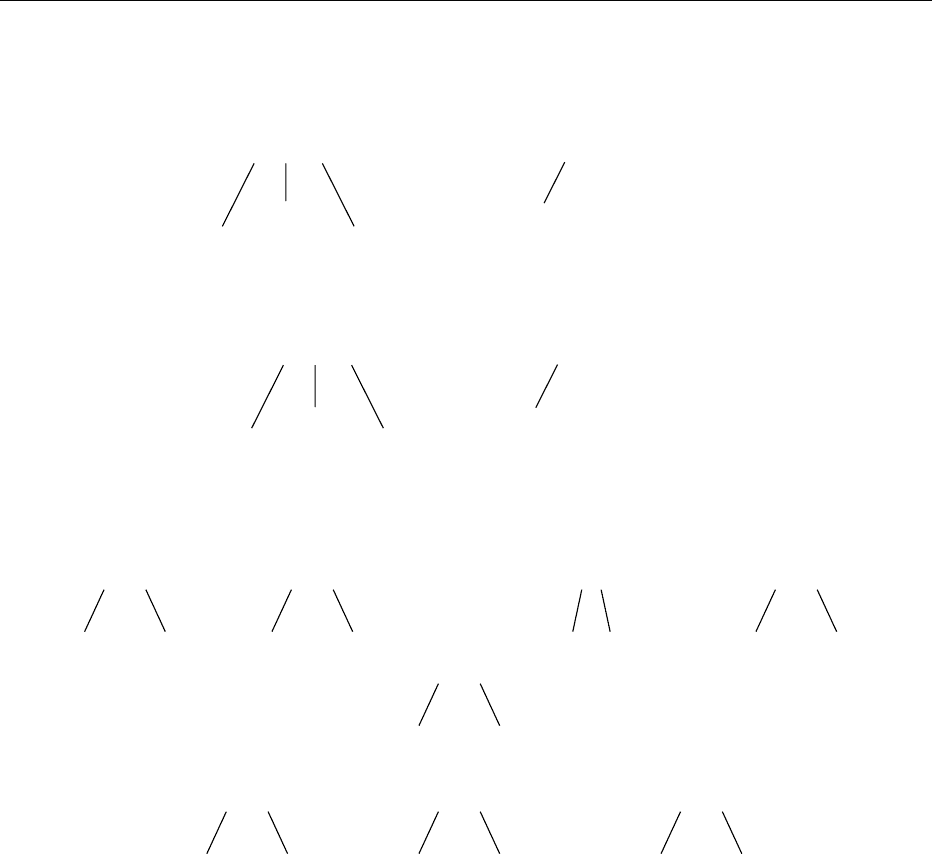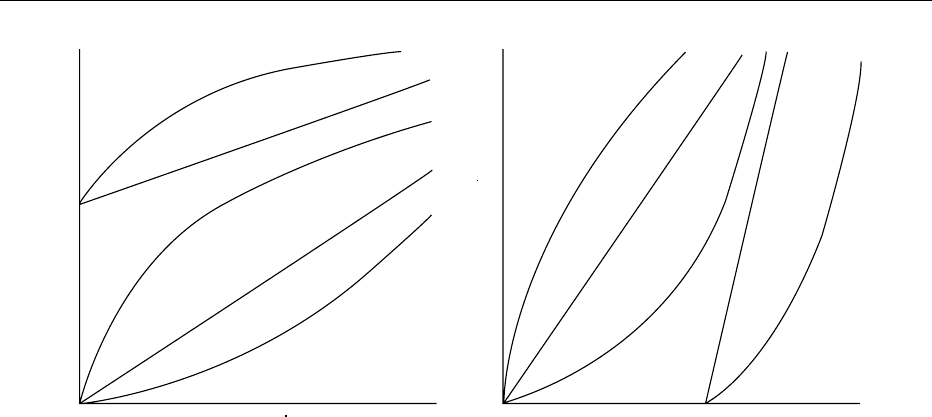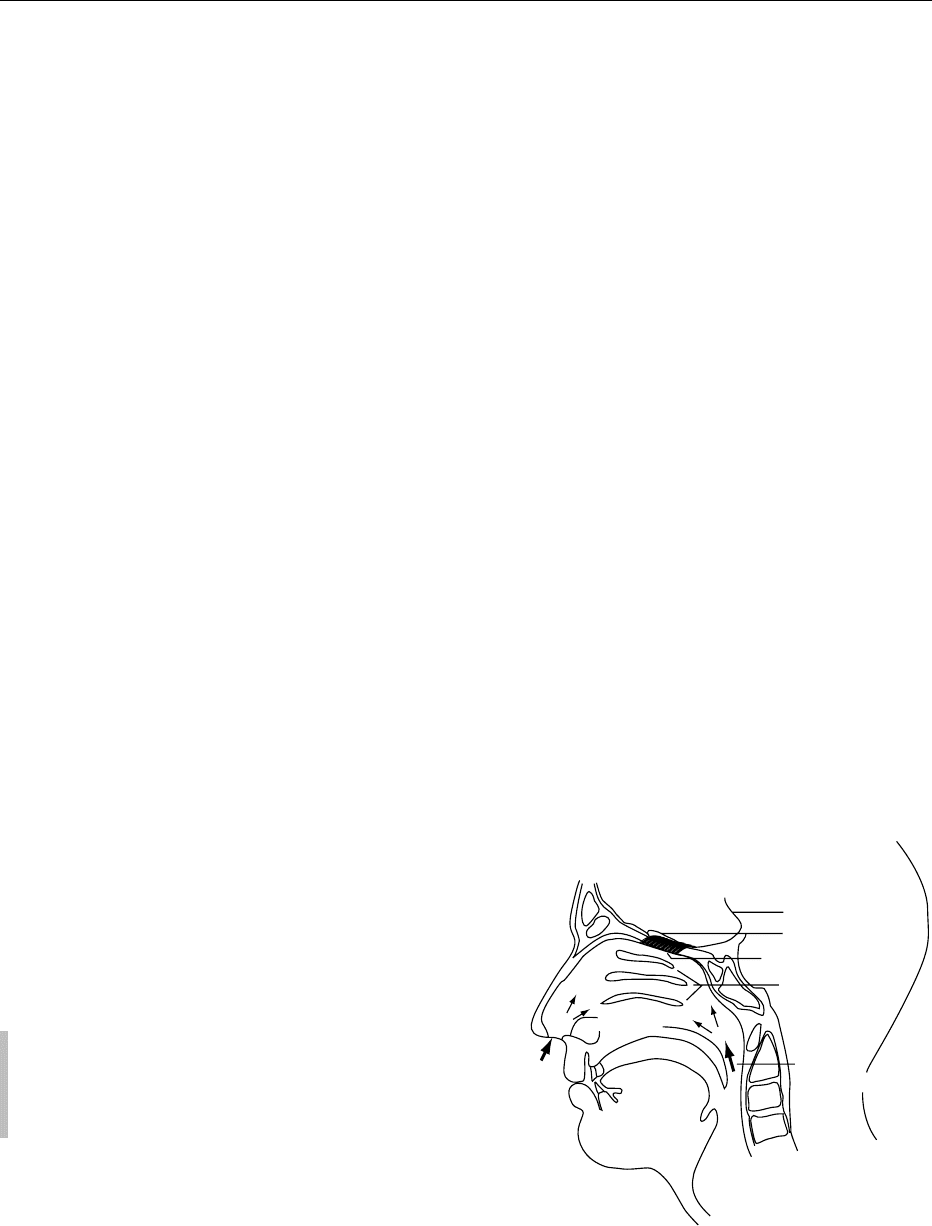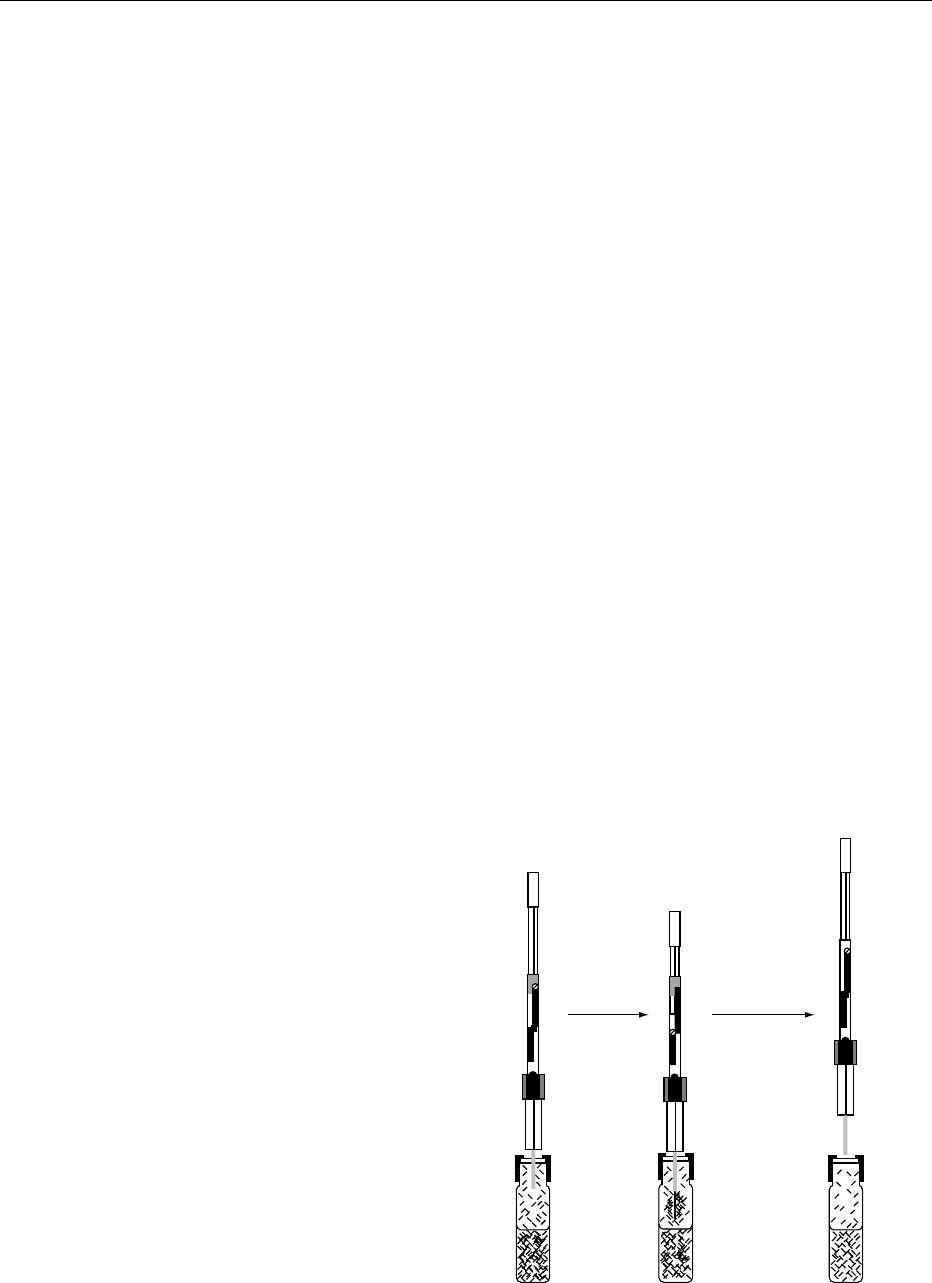Caballero B. (ed.) Encyclopaedia of Food Science, Food Technology and Nutrition. Ten-Volume Set
Подождите немного. Документ загружается.


Further Reading
ASTM (2000) ASTM Standards on Color and Appearance
Measurement, 6th edn. West Conshohocken, PA: Ameri-
can Society for Testing and Materials.
BSI/ISO (1999) BS 5929-10:1999, ISO 11037: 1999
Methods for Sensory Analysis of Food. General
Guidance and Test Method for Assessment of the Colour
of Foods. London: British Standards Institution.
CIE (1986) Publication Commission Internationale de
l’Eclairage no. 15.2 Colorimetery, 2nd edn. Vienna:
CIE Central Bureau.
Francis FJ and Clydesdale FM (1975) Food Colorimetry:
Theory and Application. Westport, CT: AVI.
Hunt RWG (1998) Measuring Colour, 3rd edn. Surbiton,
UK: Fountain Press.
Hunter RS and Harold RW (1987) The Measurement of
Appearance, 2nd edn. New York: John Wiley.
Hutchings JB (1999) Food Colour and Appearance, 2nd
edn. London: Lippincott Williams & Wilkins.
Mackinney G and Little AC (1962) Color of Foods. West-
port, CT: AVI.
McDonald R (1997) Colour Physics for Industry, 2nd edn.
Bradford, UK: Society of Dyers and Colourists.
MacDougall DB (2002) Colour in Food – Improving Qual-
ity. Cambridge: Woodhead Publishing Co. Ltd.
Texture
M C Bourne, New York State Agricultural Experiment
Station, Cornell University, Geneva, USA
A S Szczesniak, New York, NY, USA
Copyright 2003, Elsevier Science Ltd. All Rights Reserved.
A Quality Factor
0001 Texture is a sensory property of foods which, together
with appearance, aroma, and basic taste, has a pro-
found effect on consumer acceptance of foods. Each
of these properties is composed of a number of notes.
Texture lies between taste and aroma in this respect,
several dozen different texture notes being detectable
in foods, which is more than the four taste notes of
sweet, sour, salt, bitter, and less than the hundreds of
odor notes that can be recognized.
0002 Textural perception occurs directly through the
tactile (touch) and kinesthetic (movement) senses,
and indirectly through the senses of vision and hear-
ing. In contrast to color and flavor, there are no
specific sensory receptors for texture. Texture is an
important quality attribute in almost all foods and
most important in foods that are bland in flavor, or
have the characteristics of crispness or crunchiness. It
contributes to the satisfaction of chewing and the
pleasure of eating. Good textures are indicators of
excellent food preparation. Highly valued is textural
contrast, i.e., the presence of two or more contrasting,
but compatible, characteristics that can occur within
a meal, on the plate, or within a food product.
0003Texture may be defined as ‘that group of physical
characteristics that arise from the structural elements
of the food, are sensed primarily by the feeling of
touch, are related to the deformation, disintegration,
and flow of the food under a force, and are measured
objectively by functions of mass, time, and length.’
This definition teaches that texture has its roots in
structure (molecular, microscopic, macroscopic) and
the manner in which this structure reacts to applied
forces. It also emphasizes that texture is a multi-
dimensional property comprising a number of
sensory characteristics.
0004A large number of terms are popularly used to
describe textural sensations. Table 1 organizes many
of these terms into a manageable system that
facilitates understanding their interrelationships. It
classifies textural properties into mechanical charac-
teristics (reaction of the food to stress), geometrical
characteristics (the feeling of the size, shape, and
arrangements of particles in the food, sometimes
called ‘particulate properties’), and other characteris-
tics (relating to the sensations of moisture, fat, and oil
in the mouth). Table 2 provides physical and sensory
definitions of the mechanical characteristics.
Sensory Evaluation
0005Since, by definition, texture is a sensory property, the
most logical approach to its description and quantifi-
cation is by sensory evaluation. In the early days,
panels with various degrees of training were used to
score specific textural characteristics or ‘texture’ in
general. The scoring methods used were either numer-
ical intensity scales (frequently 0–7, with 0 denoting
absence and 7 a very high intensity of a specific
characteristic) or hedonic scales (ranging from ‘dis-
like extremely’ to ‘like extremely’). The latter should
not be used when the objective is to describe texture
in terms of the characteristics present or to quantify
their intensity.
0006The sensory perception of texture is a dynamic
process which involves the rate and magnitude of
the applied forces, and also the effects of temperature,
saliva, and time. The time element includes the
repeated application of destructive forces in the
masticatory process, and the duration of the food’s
contact with saliva and mouth temperature.
0007The multiparameter nature of texture and the pro-
cess dynamics of its sensory perception during masti-
cation form the basis for the sensory texture profile,
SENSORY EVALUATION/Texture 5167

the schematic for which is shown in Figure 1. The
method is used to define the texture characteristics
present, the intensity of each, the order in which they
appear, and all the changes that occur from the first
bite through completion of mastication. Texture pro-
file analysis is presently the preferred sensory method
for texture characterization because it is the only
method that provides a complete analysis of all the
textural properties of a food. Using reference samples
and standard scales for specific parameters, highly
trained panels provide a descriptive and quantitative
‘fingerprint’ of the product’s texture. The training
and maintenance of the panel may be tedious and
expensive, but the quality of the generated data
usually compensates for it. The basic principles can
be adapted to different products in different situ-
ations including untrained consumer panels. Two
examples of sensory texture profiling are shown in
Table 3.
0008Most other sensory methods can be regarded as
partial texture profiles or modifications of the basic
procedure. The two main methods are: Quantitative
Descriptive Analysis (QDA) and Spectrum. QDA
differs from texture profiling in that it uses unstruc-
tured line scales for quantifying the intensity of
texture notes present, and the data are generated by
averaging the ratings given by the individual panelists
rather than through panel discussion and a consensus.
Another difference is that the panelists generate their
own sets of terms. In contrast, the Spectrum method
uses an expanded set of terms within the standard
lexicon of texture profiling. It employs 15-point
intensity scales anchored by reference samples.
The extensive panel training and the active role
tbl0001 Table 1 Classification of textural characteristics and their relationship to popular nomenclature
Characteristics Primary parameters Secondaryparameter Popular terms
Mechanical Hardness Soft, firm, hard
Cohesiveness Brittleness Crumbly, crunchy, brittle
Chewiness Tender, chewy, tough
Gumminess Short, mealy, pasty, gummy
Viscosity Thin, thick
Springiness Plastic, elastic
Adhesiveness Sticky, tacky, gooey
Geometrical Class Examples
Particle size and shape Gritty, grainy, coarse, etc.
Particle shape and orientation Fibrous, cellular, crystalline, etc.
Other Moisture content Dry, moist, wet, juicy
Fat content Oiliness Oily
Greasiness Greasy
Adapted from Szczesniak AS (1963) Classification of textural characteristics. Journal of Food Science 28: 385–389, with permission.
tbl0002 Table 2 Definitions of the mechanical parameters of texture
Physical Sensory
Hardness Force necessary to attain a given deformation Force required to compress a substance between molar teeth
(solids) or the tongue and palate (semisolids)
Cohesiveness Strength of internal bonds Amount of sample deformation before rupture when biting with
molars
Fracturability Forces necessary to fracture the material Force with which the material crumbles, cracks, or shatters
Chewiness Energy required to disintegrate a solid food to
a state ready for swallowing
Number of chews required to masticate a sample at one chew
per second and constant rate of force application to reduce
it to a consistency suitable for swallowing
Gumminess Energy required to disintegrate a semisolid
food to a state ready for swallowing
Denseness that persists throughout mastication of a
semisolid food
Viscosity Rate of flow per unit force Force required to draw a liquid from a spoon over the tongue
Springiness Rate at which a deformed material goes back
to its undeformed condition following removal
of the deforming force
Degree and speed with which the material returns
to its original height following partial compression
with molar teeth
Adhesiveness Work necessary to overcome the attractive forces
between the surface of the food and other
surfaces with which the food comes in contact
Force of the tongue required to remove the material that
adheres to the mouth (generally the palate, but also lips,
teeth. etc.) during the normal eating process
5168 SENSORY EVALUATION/Texture

of the panel leader are similar to those of texture
profiling.
Instrumental Evaluation
0009 Although sensory methods are the final arbiter of
textural quality, instrumental methods are the most
frequently used for texture measurement because they
are cheaper and less time-consuming. To be success-
ful, any instrumental measurement must correlate
highly with the sensory evaluation. It needs to be
recognized that instrumental methods measure one
or more textural properties of a food before it is
placed in the mouth, but cannot follow the changes
that occur during mastication. Most instrumental
methods are ‘one-point’ measurements, i.e., they
measure only one dimension of the texture, albeit
usually a dominant textural property. Because there
is a wide range of types of foods and textures, people
use a wide variety of methods to assess texture sen-
sorially. Before they put food into the mouth they use
their fingers and hand to squeeze, stir, bend, or punc-
ture the food. After the food is put into the mouth the
chewing rate, the amount of lateral movement of the
mandible (jaw), and the movements of the tongue
are automatically adjusted to handle that particular
food in the most convenient way. A large number
of texture-testing instruments have been described
in the literature and almost 100 are available com-
mercially. Table 4 classifies objective methods of
Visual
First bite
Mechanical
Mechanical
Fracturability
Firmness Viscosity
Geometrical and surface properties
Geometrical
Geometrical
Any, depending on product
Any, depending on product
Masticatory
Masticatory
(late)
(early)
Chewiness
Gumminess Adhesiveness
MoistureBreakdown
Type Rate Adsorption Release
Fat
Release Mouth-coating
Mouth-coating
Type Amount
Swallowing
Ease of Throat-coating
Throat-coating
Residual
Mouth-coating
Type Amount Type Amount
General feel on:
Mouth Throat
fig0001 Figure 1 Sensory texture profiling technique. Reproduced from Sensory Evaluation: Texture, Encyclopaedia of Food Science, Food
Technology and Nutrition, Macrae R, Robinson RK and Sadler MJ (eds), 1993, Academic Press, with permission.
SENSORY EVALUATION/Texture 5169

food texture measurement on the basis of the vari-
able(s) measured and the principle of the test. Force-
measuring instruments are the most common, but
other principles, such as distance, time, and energy,
are also used. There are a few examples where a
chemical analysis correlates well with a textural prop-
tbl0003 Table 3 Basic sensory texture profile ballot for meatballs and soda crackers
Texturenotes Meatballs Soda crackers
Initial
Mechanical
Hardness (9-point scale) 3.4 4.0
Fracturability (7-point scale) 0.7 2.5
Viscosity (8-point scale) Not applicable Not applicable
Geometrical Lumps, with a grainy surface Flaky and puffy
Other Moist, uncut surface is slippery and cut surface is
not slippery
Dry
Masticatory
Mechanical
Gumminess (6-point scale) 1.2 0
Chewiness 17.7 chews 16 chews
Adhesiveness (5-point scale) 1.2 0.7
Geometrical Coarse, grainy; some fibrous particles are present Flaky
Other Moist Dry
Residual
Rate of breakdown Large lumps break down fast;
grains break down at a medium rate
High
Type of breakdown Lumps turn into a nonhomogeneous, grainy paste,
and grain size decreases. Some stringly fibrous
grains are present; they become more noticeable
towards the end and require more effort to chew
It breaks down into little rough sheets,
then changes into a smooth dough
Moisture absorption Initially moist. Saliva mixes easily with slurry and
the bolus becomes progressively more
moist. Residual grains feel dry
It absorbs a lot of saliva slowly and
change into a moist dough
Mouth-coating Slight residual oiliness. A few particles stick
between the teeth and around the mouth
Little pieces stick to the mouth and gums
From Bourne MC (1982) Food Texture and Viscosity: Concept and Measurement. New York: Academic Press, with permission.
tbl0004 Table 4 Objective methods for measuring food texture
Principle Measured variable Dimensionalunits Examples
Force Force (F) mlt
2
Puncture Fmlt
2
Fruit pressure testers
Extrusion Fmlt
2
Shear press, Tenderometer
Shear Fmlt
2
Warner– Bratzler shear
Crushing Fmlt
2
Tensile Fmlt
2
Extensograph
Torque Fmlt
2
Rotary viscometers, Farinograph, Struct-o-Graph
Snapping Fmlt
2
Deformation Fmlt
2
Distance
Length l Penetrometer, Bostwick Consistometer
Area l
2
USDA Consistometer
Volume l
3
Bread volume, Succulometer
Time Time (T) t Ostwald Viscometer, Biscuit Texture Meter
Energy Work (F D) ml
2
t
2
Area under force–distance curves
Ratio F or D or T measured twice Dimensionless Specific Gravity
Multiple F and D and Tmlt
2
, l, t Instron, Lloyd, Zwick, TA.XT2
Chemical analysis Concentration Dimensionless (%) Alcohol-insoluble solids
Miscellaneous Anything Anything Optical density, crushing sounds
Adapted from Bourne MC (1996) A classification of objective methods for measuring texture and consistency of foods. Journal of Food Science 31: 1011–
1015, with permission.
5170 SENSORY EVALUATION/Texture

erty. Finally, the sounds that are generated are an
important dimension of the textural quality of crisp
and crunchy foods. Characteristic sounds are gener-
ated when these foods are compressed. The sounds
are of low frequency and come in a series of sharp
bursts, that occur in rapid succession. Crunchy foods
exhibit notes of a lower frequency than crisp foods.
0010 The key element that differentiates force-measuring
instruments is the geometry of the test cell which
holds the sample and applies a force to it (cutting,
puncture, compression, extrusion, etc.). Recognition
of the above fact has led to the widespread use of
strength-of-materials-testing machines that provide a
sophisticated driving mechanism, force sensor, and
recording of the force–time relationship. They are
more expensive than the simple instruments that
have been in use for many decades, and they came
into use in the late 1960s. They are called universal
testing machines (UTMs) because, with appropriate
test cells attached, all test procedures that require
rectilinear movement can be performed on the same
machine. With the advent of computer retrieval and
analysis of the force–time data their use is rapidly
becoming routine for quality purposes also. One
UTM, the TA.XT2 texture analyzer, has been ex-
pressly developed for measuring textural properties
of foods. Its operation is so simple, yet precise, that it
is now widely used for both research and quality
control purposes.
0011 The following criteria are recommended as a guide
to selecting a texture-testing instrument or the type of
test to program into an UTM.
.
0012 Purpose – research or quality assurance.
.
0013 Nature of product – rheological type, hetero-
geneity.
.
0014 Required accuracy – high variability inherent in
unprocessed foods often necessitates many replica-
tions.
.
0015 Cost – including operation and maintenance.
.
0016 Time – routine use requires rapid testing.
.
0017 Location – ability to withstand adverse environ-
mental conditions when placed in factory sur-
roundings.
.
0018 Nature of sensory evaluation method used by
people (squeeze in hand, cut with incisors, crush
between molars, roll with the tongue against the
hard palate, etc.)
0019 This should narrow the field to the most promising
two or three test principles. The final candidates
should be tested over the full range of textures nor-
mally encountered with the food and correlated with
sensory evaluation. A statistical analysis of the results
should identify which principle and instrument are
the best for each particular application. The final
step is to establish the test conditions that give the
strongest resolution between different samples and
then standardize them. These include sample size,
test cell dimensions, force range, speed of travel of
moving parts, chart speed, temperature, and perhaps
other factors.
Texture Profile Analysis
0020The methodology of texture profile analysis (TPA)
brings instrumental texture evaluation a step closer
to sensory testing. It involves compressing a bite-size
piece of food two or more times in a reciprocating
motion that simulates the action of the jaw, and
quantifying from the resulting force–time curve a
number of textural parameters that correlate well
with sensory evaluation. The method, originally de-
veloped for the General Foods Texturometer, has
been adapted to universal testing machines. Figure 2
shows a generalized TPA force–time curve. Hardness
is defined as the peak force on the first compression
cycle (first bite); fracturability is defined as the first
significant break in the curve on the first bite. The
areas under the curve during the first bite and
the second bite are a measure of the work done in
the compression. The ratio of these two areas (A2/A1)
is defined as cohesiveness. The negative force peak in
the first decompression is defined as adhesive force
and the negative areas as adhesive work. The distance
that the product extends in the decompression is de-
fined as stringiness, and the distance that the product
recovers its height between the first and second com-
pressions is defined as springiness. Two other param-
eters are derived by calculation: gumminess is defined
as the product of hardness cohesiveness; chewiness
is defined as the product of hardness cohesiveness
springiness. Gumminess is the energy required to
disintegrate a semisolid food while chewiness is the
energy required to masticate a solid food. It is incor-
rect to report gumminess and chewiness for the same
product.
0021In the early days, instrumental texture profile
analysis was an academic curiosity because of the
long time required to extract the information from
the force–time curves. With computer retrieval and
analysis of the data, the time requirement has been
reduced to the point where it can become a simple
routine test. The TA.XT2 texture analyzer is particu-
larly well suited to do this, and as a result measuring
TPA in the TA.XT2 is now a widely used procedure.
Rheological Measurements
0022Historically, rheology has been defined as the study
of the deformation and flow of matter or the response
SENSORY EVALUATION/Texture 5171

of materials to stress. The science of rheology, proven
so useful in the field of high polymers, has many
applications to food, including raw materials (e.g.,
grains, meats, fruits), intermediate products in the
manufacturing process (e.g., bread dough, cheese
curd, sausage emulsions), and finished products
(all foods). However, rheology does not cover all
aspects of texture. The size reduction that occurs
during mastication is not rheology, neither are the
sensations of oiliness, moistness, and particle size
and shape.
0023 Most people believe that there is a sharp distinction
between solids (which do not flow) and liquids
(which flow). In fact, the distinction between solids
and liquids is far from clear because many liquids
possess some of the properties of solids, and many
solids possess some of the qualities of liquids. The
science of rheology specializes in the study of
these complex materials (of which there are many
examples in foods) that are partly solid and partly
liquid.
0024 The flow of liquids may be divided into several
broad classes:
1.
0025Newtonian flow, in which the shear rate* is dir-
ectly proportional to the shear stressy. Examples
are edible oils, sugar syrups, milk, and honey. The
measurement of the properties of these foods is
straightforward, since viscosityz is independent
of shear rate.
2.
0026Plastic or Bingham flow, in which a minimum
shear stress, known as the ‘yield stress,’ must be
exceeded before flow begins. Examples are tomato
ketchup, whipped egg white, mayonnaise, margar-
ine, and butter.
First bite Second bite
Downstroke DownstrokeUpstroke
Hardness 1
Hardness 2
Fracturability
Stringiness
Area 3
Area 1
Force
Adhesive force
Area 2
Springiness
Upstroke
Time
0
fig0002 Figure 2 A generalized texture profile analysis curve. From Bourne MC (1978) Texture profile analysis. Food Technology 32: 63, with
permission.
*Shear rate (denoted by the symbol g
.
and expressed in s
1
) is the
velocity gradient established in a fluid that results from the appli-
cation of a shear stress.
yShear stress (denoted by s and expressed in Pa) is the force per unit
area applied tangential to the plane on which the force acts.
zViscosity (denoted by Z and expressed in Pa s) is the internal
friction of a fluid or its tendency to resist flow (Z ¼ s/
_
gg); it should
only be used for Newtonian fluids. Apparent viscosity (denoted by
Z
a
) is the viscosity of a non-Newtonian fluid expressed as the
viscosity of a Newtonian fluid at a specified shear rate (e.g., Z
a
¼
s/
_
gg
50
is the apparent viscosity of a non-Newtonian fluid at a shear
rate of 50 s
1
).
5172 SENSORY EVALUATION/Texture

3.0027 Pseudoplastic flow, in which an increasing shear
force gives a more than proportionate increase in
shear rate, i.e., apparent viscosity decreases with
increasing shear rate. Salad dressings exemplify
this type of flow.
4.
0028 Dilatant flow, in which equal increments in shear
stress give less than equal increments in shear rate,
i.e., apparent viscosity increases with increasing
shear rate. This type of flow is rare in foods but
is found in high-solid suspensions of raw starch
and some chocolate syrups. (Refer to individual
foods.)
0029 The differences between these types of flow are
shown in Figure 3. The shear-stress versus shear-rate
plot (Figure 3a) is the more common manner of pre-
sentation; another that is sometimes used is shown in
Figure 3b, in which the axes are interchanged.
Time Dependency
0030 For some fluids the shear stress is a function of both
the shear rate and the time it is subjected to shear. For
thixotropic products the apparent viscosity decreases
with time of shearing. This condition is frequently
found in food systems such as gum solutions and
starch pastes. Rheopectic products increase in
apparent viscosity with time of shearing. This type
of behavior is rare in foods.
Viscoelasticity
0031 As discussed above, most foods combine some of
the properties of ideal liquids, which exhibit only
viscosity (flow) and ideal solids which exhibit only
elasticity (deformation). These are called viscoelastic
foods. In characterizing these systems rheologically it
is necessary to measure both the viscous component
(loss modulus, G
00
) and the elastic component (stor-
age modulus. G
0
). A food with high G
0
and low G
00
behaves more like a solid than a liquid, while a food
with low G
00
and high G
0
behaves more like a liquid
than a solid. An elastic solid such as rock candy will
have a G
00
value of zero, while a Newtonian liquid
such as sucrose syrup will have a G
0
value of zero.
0032Traditionally, viscoelasticity was measured by per-
forming creep tests in which a weight was placed on
the test material and the change in specimen height
was monitored over a period of time. Presently, visco-
elasticity is usually measured by an oscillation test in
which a sample of known dimensions (if solid) or filled
into the space between a cone and plate or parallel
plates or a cup with standard dimensions (if liquid) is
subjected to repeated small sinusoidal deformations
that do not fracture the sample. Analysis of the
resulting shear stress versus time curves yields the
numerical values of G
0
and G
00
. Modern instrumenta-
tion provides a computerized system for quantifying
these moduli. The rate and degree of deformation may
be varied to provide information on the internal struc-
ture and mechanical behavior of the material. (See
Food Acceptability: Affective Methods.)
See also: Food Acceptability: Affective Methods;
Sensory Evaluation: Sensory Characteristics of Human
Foods; Food Acceptability and Sensory Evaluation;
Sensory Difference Testing; Sensory Rating and Scoring
Methods
P
s
e
u
d
o
p
l
a
s
t
i
c
w
i
t
h
y
i
e
l
d
p
o
i
n
t
P
s
e
u
d
o
p
l
a
s
t
i
c
w
i
t
h
y
i
e
l
d
p
o
i
n
t
Plastic or Bingham
Plastic or Bingham
Pseudoplastic
Pseudoplastic
Newtonian
Newtonian
Dilatant
Dilatant
Shear stress (σ)
Shear stress(σ)Shear rate (γ)
Shear rate (γ)
fig0003 Figure 3 (a) Shear-stress versus shear-rate plots for various types of flow. (b) Shear-rate versus shear-stress plots for the same
types of flow. From Bourne MC (1982), Food Texture and Viscosity: Concept and Measurement. New York: Academic Press, with
permission.
SENSORY EVALUATION/Texture 5173

Further Reading
Aguilera JM and Stanley DW (1999) Microstructural Prin-
ciples of Food Processing and Engineering, 2nd edn.
Gaithersburg, Maryland: Aspen Publishers.
Bourne MC (2002) Food Texture and Viscosity: Concept
and Measurement, 2nd edition. New York: Academic
Press.
Christensen CM (1984) Food texture perception. Advances
in Food Research 29: 159–199.
De Man JM, Voisey PW, Rasper VF and Stanley DW (eds)
(1976) Rheology and Texture in Food Quality. West-
port, Connecticut: AVI Publishing.
Lawless HT and Heymann H (1999) Sensory Evaluation of
Food – Principles and Practices. Gaithersburg, Mary-
land: Aspen Publishers.
Meilgaard M, Civille GV and Carr BT (1999) Sensory
Evaluation Techniques, 3rd edn. Boca Raton, Florida:
CRC Press.
Mohsenin NN (1970) Application of engineering tech-
niques to evaluation of texture of solid food materials.
Journal of Texture Studies 1: 133–154.
Mun
˜
oz AM and Civille GV (1987) Factors affecting percep-
tion and acceptance of food texture by American con-
sumers. Food Reviews International 3: 285–322.
Rao MA and Steffe JF (1992) Viscoelastic Properties of
Foods. New York: Elsevier Applied Science.
Rosenthal AJ (1999) Food Texture – Measurement and
Perception. Gaithersburg, Maryland: Aspen Publishers.
Sherman P (ed.) (1979) Food Texture and Rheology. New
York: Academic Press.
Szczesniak AS (1987) Correlating sensory with instrumen-
tal texture measurements – an overview of recent devel-
opments. Journal of Texture Studies 18: 1–15.
Szczesniak AS (1991) Textural perceptions and food
quality. Journal of Food Quality 14: 75–85.
Szczesniak AS and Kahn E (1971) Consumer awareness of
and attitudes to food texture I. Adults. Journal of Tex-
ture Studies 2: 280–295.
Aroma
D S Mottram and J S Elmore, The University of
Reading, Whiteknights, Reading, UK
Copyright 2003, Elsevier Science Ltd. All Rights Reserved.
Aroma
0001 The sense of smell (olfaction) is one of the two chem-
ical senses in humans, the other being the sense of
taste. The term ‘odor’ has been defined by the British
Standards Institute as the quality of the sensation
perceived, via the olfactory organ situated in the
nasal cavity, from certain volatile compounds; aroma
is an odor with a pleasant connotation. The olfactory
organ is extremely sensitive, and hence the concen-
trations of volatile compounds in foods contributing
to aroma (odorants) may be very low. These complex
mixtures of volatile compounds may be analyzed
by extraction, followed by separation and character-
ization.
Olfaction
0002The olfactory receptors are sited in the olfactory epi-
thelia, two small patches of mucous membrane in the
recesses of the nasal passages (Figure 1). The response
of these receptors to airborne molecules determines
the odor of a substance. Molecules entering the nose
find their way to the olfactory epithelia where they
come into contact with cilia (hairs) on the receptor
cells. These produce a change in electrical potential
and a signal travels along nerve fibers to the olfactory
bulb, part of the brain. There are approximately 100
million olfactory receptor cells in the human nose.
0003Olfaction plays a primary role in the perception of
flavor in foods and beverages. When food is eaten
taste, smell and mouthfeel act in concert to produce
the integrated sensation of flavor. The aroma of the
food is not just perceived in inhaled air. When food is
in the mouth, odorants can reach the olfactory recep-
tors by the retronasal route, entering the nasal cavity
by the same route as expired air.
Olfactory nerve
Olfactory bulb
Olfactory epithelium
Turbinate bones
Odor:
retronasal route
Odor:
nasal route
Nasal cavity
Tongue
fig0001Figure 1 Representation of a section through the nasal and
oral cavities showing the olfactory organ. From Thomson DMH
(1986) The meaning of flavour. In: Birch GG and Lindley MG (eds.)
Developments in Food Flavours, pp. 1–21. London: Elsevier Applied
Science, with permission.
5174 SENSORY EVALUATION/Aroma

Odor Sensitivity
0004 Odor perception is considerably more sensitive than
the perception of taste, by factors of one million to
one billion. As we are able to differentiate a large
number of odorants, aroma plays the major role in
delineating the characteristic flavor of a particular
food. The inability to differentiate flavors is usually
associated with anosmia (lack of a sense of smell)
rather than ageusia (lack of a sense of taste).
0005 It has been suggested that the triggering of one
human olfactory neurone by a powerful odorant may
require only eight molecules, and as few as 40
molecules can produce an identifiable sensation. The
odor threshold of a compound is defined as the min-
imum concentration at which the odor of a compound
can be detected. The range of thresholds exhibited by
odorants extends over at least 10 orders of magnitude
(Table 1). One compound with one of the lowest
reported odor thresholds is bis-(2-methyl-3-furyl) di-
sulfide, which has a meaty aroma and can be detected
at concentrations of 2 parts in 10
14
parts of water.
This concentration is equivalent to about 20 mg in the
water of a 50-m swimming pool of 1000 m
3
capacity!
At the other end of the range, at least 1 mg of ethanol
needs to be present in 10 ml of water before the smell
of ethanol can be detected.
Chemical Nature of Aroma Compounds in
Foods
0006 The range of chemical classes that contribute to food
aromas is diverse in both chemical composition and
physical properties, and includes aliphatic, alicyclic,
aromatic, and heterocyclic compounds. All aroma
compounds have some volatility, but this ranges
from permanent gases to compounds with very little
vapor pressure and molecular weights up to 300.
Approximately 10 000 different volatile compounds
have been identified in foods and beverages; complex
cooked foods such as coffee and meat contain in
excess of 1000 aroma compounds. Many of these
compounds are common to a number of different
foods, and the contribution of any compound to the
characteristic aroma of a particular food will depend
on a number of factors, including:
.
0007odor character;
.
0008concentration in product;
.
0009odor threshold;
.
0010vapor pressure;
.
0011adsorption on the food matrix;
.
0012interaction with other components;
.
0013synergism with other volatiles.
0014Some volatiles have little aroma and do not con-
tribute to food flavor, whereas others define the
aromas of specific foods (e.g., benzaldehyde –
almonds; citral – lemons). However, for most foods,
the aroma depends on contributions from a complex
mixture of volatiles comprising different chemical
classes. (See Essential Oils: Properties and Uses;
Flavor (Flavour) Compounds: Structures and
Characteristics.)
Characterization of Aroma Volatiles
0015In attempting to identify those compounds that char-
acterize different food aromas, flavor scientists have
analyzed the volatile composition of many different
foods. This usually involves the extraction of volatiles
from the food matrix, their concentration, and the
separation and identification of the individual com-
ponents (Table 2). As far as possible, the extract
should contain only the volatile components in the
same relative proportions as the original food, with-
out the introduction of artefacts. The wide range of
odor thresholds can result in quantitatively minor
tbl0001 Table 1 Odor thresholds of some aroma compounds in
aqueous solution
Compound Threshold (ppb, mgl
1
)
Ethanol 100 000
2,5-Dimethylpyrazine 1 800
Butyric acid 250
Limonene 10
Hexanal 5
Ethyl 2-methylbutyrate 1
Methanethiol 0.2
b-Ionone 0.007
2-Isobutyl-3-methoxypyrazine 0.002
Bis-(2-methyl-3-furyl)disulfide 0.00002
2,3,6-Trichloroanisole 0.0000003
tbl0002Table 2 Stages in the analysis of aroma volatiles
Step Analytical techniques
Isolation and concentration Headspace analysis
Adsorption
Distillation
Extraction
Separation Gas chromatography
Preparative liquid chromatography
Identification Chromatographic retention time
Mass spectrometry
Infrared spectroscopy
Nuclear magnetic resonance
spectroscopy
Chemical synthesis
Reference compounds
Sensory characterization Gas chromatography olfactometry
Sensory panel
SENSORY EVALUATION/Aroma 5175

components making a major contribution to the
aroma, whereas some large components will have no
sensory significance. Successful isolation and identifi-
cation of minor components with aroma significance
is one of the major challenges of aroma analysis.
Isolation and Concentration of Aroma Volatiles
0016 The components of food that are responsible for
aroma are present in extremely small quantities com-
pared with the major constituents, of which water is
usually the most abundant. A number of isolation
techniques exist, all based on utilizing the volatile
nature of the aroma compounds to separate them
from the food matrix.
0017 Headspace analysis The concentration of volatiles
in the headspace vapor above a food or beverage will
be very low. However, it will contain a representative
mixture of those compounds that contribute to the
aroma of the product, and therefore, analysis of that
headspace will provide the best method of obtaining a
sample representative of the food aroma. However,
direct introduction of a given volume of the vapors
above a food sample on to a gas chromatographic
column is rarely used, because the volatiles are not
present in sufficiently high concentrations and be-
cause water from the sample will often cause interfer-
ence. Purging the headspace volatiles with a stream of
inert gas (nitrogen or helium) and condensing the
volatiles in a series of traps cooled by ice, solid carbon
dioxide, or liquid nitrogen will result in a concen-
trated aroma condensate. Extraction of the conden-
sate with a small amount of a suitable solvent provides
an aroma extract suitable for chromatographic analy-
sis. Instead of using cold traps, headspace volatiles
can be collected on suitable adsorbents.
0018 Adsorption The ability of certain solid surfaces to
reversibly adsorb volatile organic molecules is widely
used in the analysis of aroma compounds. Activated
charcoal was the first to be used, but now, certain
porous polymers, in particular Tenax TA, are fre-
quently employed. Like charcoal, all of these mater-
ials readily adsorb volatiles while having little affinity
for water, making them particularly useful in the
analysis of samples with a high water content.
0019 In a typical collection, a stream of a purified inert
gas (helium or nitrogen) sweeps the volatiles from the
sample flask into a small tube containing 10–200 mg
of the adsorbent. Adsorbed volatiles can be heat
desorbed directly on to a gas chromatographic
column by placing the adsorbent trap in a specially
modified injection port, thus avoiding any loss of
components or unnecessary dilution. Cooling the
front of the column (‘cryofocusing’) with solid carbon
dioxide or liquid nitrogen during this desorption will
avoid any loss in chromatographic resolution. Alter-
natively, volatiles may be removed from the trap by
passing a small amount of a low-boiling-point solvent
through the adsorbent. Concentration of the collected
solution by careful evaporation of the solvent pro-
vides an aroma extract for gas chromatography (GC).
0020Solid-phase microextraction This is an adaptation
of traditional adsorption methods in which a small
fused silica fiber, coated in an adsorbent material, is
mounted in a syringe-like device (Figure 2). The
needle is pushed through a septum, and the fiber is
exposed to the headspace above the food or beverage
sample, which is sealed in a suitable container. Vola-
tile compounds are adsorbed on to the fibre, and at
the end of the extraction, the fiber can be removed
from the sample vessel and directly desorbed into the
split/splitless injector of a gas chromatograph. Again,
cryofocusing of the aroma volatiles on the front of the
gas chromatographic column is performed to insure
no loss of resolution. Solid-phase microextraction
(SPME) has evolved rapidly since its introduction in
the early 1990s, and fibres coated with Carboxen
TM
are suitable for the analysis of a wide range of
aroma compounds. SPME can be automated, and its
ease of use, relatively low cost, and affinity for a large
range of compounds would suggest that it will
become a widely used technique for the isolation of
aroma volatiles.
Pierce sample
septum with
SPME needle
1
Expose fiber and
commence
extraction
2
Retract fiber at the end
of extraction
3
fig0002Figure 2 Principle of solid-phase microextraction.
5176 SENSORY EVALUATION/Aroma
